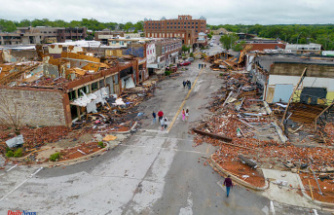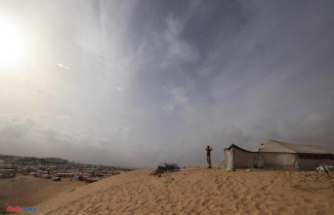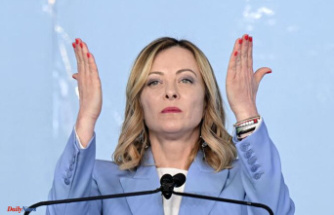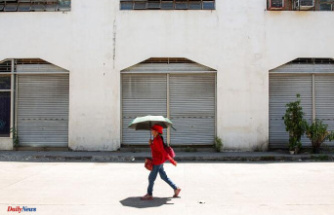“Normally, I would never have been able to cross the field on my motorbike. At this time of the year, the plants should be up to my knee and the rice field would be flooded. The water needed to irrigate them never arrived," he explains.
The "Stella" farm, located in the village of Zeme nestled in the Po plain 70 km south-west of Milan, is part of the "golden triangle" of Italian rice fields, which stretches from Pavia in Lombardy to Vercelli and Novare in Piedmont, the leading rice producing region in Europe.
"The last rain worthy of the name dates back to December and we saw little snow on the mountains. It is the fault of climate change", says the 58-year-old rice farmer, who estimates that his income has collapsed by "80 to 90%".
"If there is no more water, the loss of my turnover can reach up to 100%", fulminates one of the rice farmers from the neighboring farms, Enrico Sedino.
The parched earth cracks, the rice shoots, covered with a thin layer of dust, are rickety. The small irrigation canals that run along the fields are dry, or almost. The waters of the Po, at a historically low level, only arrive in drips.
- Lunar landscape -
"Not only has the harvest taken a hit, but the whole ecosystem is withering away," laments Massimo Saronni, mayor of Zeme and rice farmer for 30 years.
Before, the rice fields resounded with the chirping of crickets, the croaking of frogs and clouds of dragonflies enveloped the fields. Gray herons and white ibises fed on insects there.
From now on, "finding yourself in a countryside with such a heavy silence, it's depressing, you have the impression of being on the moon?!", He testifies.
If the 50 hectares of Dario Vicini are irrigated through the Canal Cavour carrying the waters of the Po, other rice fields in the province of Pavia are fed by Lake Maggiore or Lake Como.
But the Lombardy region has warned that the lakes' reserves could run out by the end of July, sealing "the end of water for agriculture".
Faced with the worst drought in 70 years, Rome declared a state of emergency in early July in five regions (Emilia-Romagna, Friuli-Venezia Giulia, Lombardy, Veneto and Piedmont), four of which are watered by the Po.
“Unfortunately, the farmer is forced to abandon certain fields to the detriment of others, exactly like the doctor who chose those with a chance of being saved during the Covid-19 pandemic”, notes, bitterly, Massimo Saronni.
- "Apocalyptic situation" -
About sixty kilometers east of Zeme, at the confluence between the Ticino and Po rivers, white and blue boats are stranded on a sandbar, in the middle of stagnant pools of water. Tired of the stifling heat, a few swimmers venture into the brackish waters of the river which have sunk 3.3 meters below their usual level at this location.
Italy has 220,000 hectares of rice fields, divided into more than 4,000 farms. Some 1.5 million tonnes of rice are produced annually, 60% of which is exported. Among the more than 200 varieties are the famous Carnaroli, Arborio, Roma or Baldo, essential for the preparation of typical risotto dishes.
In the country of "pasta", rice consumption has increased during the confinements due to the pandemic. But now, "we risk a shortage of rice in Italy", warns Stefano Greppi, president of the Coldiretti agricultural union in Pavia.
"The situation is desperate, not to say apocalyptic, because there is a total lack of water needed to irrigate the rice fields", regrets this rice farmer.
"The economic damage is incalculable, it's millions of millions of euros," he says. "If there is no harvest this year, there is a risk that many businesses will go out of business or go bankrupt."












